The Huastec or Téenek are an indigenous people of Mexico, living in the La Huasteca region including the states of Hidalgo, Veracruz, San Luis Potosí and Tamaulipas concentrated along the route of the Pánuco River and along the coast of the Gulf of Mexico.
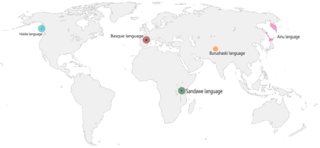
A language isolate is a language that has no demonstrable genetic relationship with any other languages. Basque in Europe, Ainu in Asia, Sandawe in Africa, Haida and Zuni in North America, Kanoê in South America, Tiwi in Australia and Burushaski in Pakistan are all examples of such languages. The exact number of language isolates is yet unknown due to insufficient data on several languages.

The Mayan languages form a language family spoken in Mesoamerica, both in the south of Mexico and northern Central America. Mayan languages are spoken by at least six million Maya people, primarily in Guatemala, Mexico, Belize, El Salvador and Honduras. In 1996, Guatemala formally recognized 21 Mayan languages by name, and Mexico recognizes eight within its territory.

The Indigenous languages of the Americas are the languages that were used by the Indigenous peoples of the Americas before the arrival of non-Indigenous peoples. Over a thousand of these languages are still used today, while many more are now extinct. The Indigenous languages of the Americas are not all related to each other; instead, they are classified into a hundred or so language families and isolates, as well as a number of extinct languages that are unclassified due to the lack of information on them.

Penutian is a proposed grouping of language families that includes many Native American languages of western North America, predominantly spoken at one time in British Columbia, Washington, Oregon, and California. The existence of a Penutian stock or phylum has been the subject of debate among specialists. Even the unity of some of its component families has been disputed. Some of the problems in the comparative study of languages within the phylum are the result of their early extinction and limited documentation.

Mesoamerican languages are the languages indigenous to the Mesoamerican cultural area, which covers southern Mexico, all of Guatemala, Belize, El Salvador, and parts of Honduras, Nicaragua and Costa Rica. The area is characterized by extensive linguistic diversity containing several hundred different languages and seven major language families. Mesoamerica is also an area of high linguistic diffusion in that long-term interaction among speakers of different languages through several millennia has resulted in the convergence of certain linguistic traits across disparate language families. The Mesoamerican sprachbund is commonly referred to as the Mesoamerican Linguistic Area.

The Oto-Manguean or Otomanguean languages are a large family comprising several subfamilies of indigenous languages of the Americas. All of the Oto-Manguean languages that are now spoken are indigenous to Mexico, but the Manguean branch of the family, which is now extinct, was spoken as far south as Nicaragua and Costa Rica. Oto-Manguean is widely viewed as a proven language family.

This is a list of different language classification proposals developed for the Indigenous languages of the Americas or Amerindian languages. The article is divided into North, Central, and South America sections; however, the classifications do not correspond to these divisions.

Comecrudan refers to a group of possibly related languages spoken in the southernmost part of Texas and in northern Mexico along the Rio Grande of which Comecrudo is the best known. These were spoken by the Comecrudo people. Very little is known about these languages or the people who spoke them. Knowledge of them primarily consists of word lists collected by European missionaries and explorers. All Comecrudan languages are extinct.
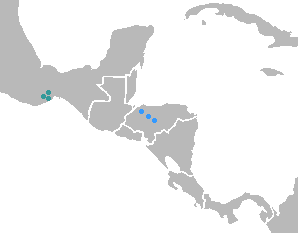
The Tequistlatec languages, also called Chontal, are three close but distinct languages spoken or once spoken by the Chontal people of Oaxaca State, Mexico.
Lyle Richard Campbell is an American scholar and linguist known for his studies of indigenous American languages, especially those of Central America, and on historical linguistics in general. Campbell is professor emeritus of linguistics at the University of Hawaiʻi at Mānoa.
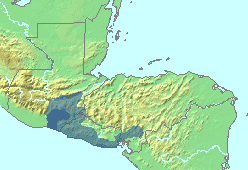
Xinca is a small extinct family of Mesoamerican languages, formerly regarded as a single language isolate, once spoken by the indigenous Xinca people in southeastern Guatemala, much of El Salvador, and parts of Honduras.
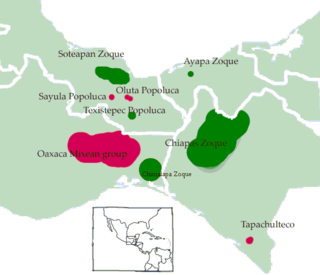
The Mixe–Zoque languages are a language family whose living members are spoken in and around the Isthmus of Tehuantepec, Mexico. The Mexican government recognizes three distinct Mixe–Zoquean languages as official: Mixe or ayook with 188,000 speakers, Zoque or o'de püt with 88,000 speakers, and the Popoluca languages of which some are Mixean and some Zoquean with 69,000 speakers. However, the internal diversity in each of these groups is great. Glottolog counts 19 different languages, whereas the current classification of Mixe–Zoquean languages by Wichmann (1995) counts 12 languages and 11 dialects. Extinct languages classified as Mixe–Zoquean include Tapachultec, formerly spoken in Tapachula, along the southeast coast of Chiapas.

Chicomuceltec is a Mayan language formerly spoken in the region defined by the municipios of Chicomuselo, Mazapa de Madero, and Amatenango de la Frontera in Chiapas, Mexico, as well as some nearby areas of Guatemala. By the 1970s–80s it had become extinct, with recent reports in Mayanist literature finding that there are no living native speakers. Communities of contemporary Chicomucelteco descendants, numbering approximately 1500 people in Mexico and 100 in Guatemala are Spanish speakers.

Chico is an extinct Maiduan language formerly spoken by Maidu peoples who lived in Northern California, between Sacramento and the Sierra foothills. It may be a divergent dialect of Konkow or an independent language.
Macro-Mayan is a proposal linking the clearly established Mayan family with neighboring families that show similarities to Mayan. The term was apparently coined by McQuown (1942), but suggestions for historical relationships relevant to this hypothesis can be traced back to the Squier (1861), who offered comparisons between Mayan and Mixe-Zoquean languages, and Radin, who did the same for Mixe-Zoquean, Huave, and Mayan.
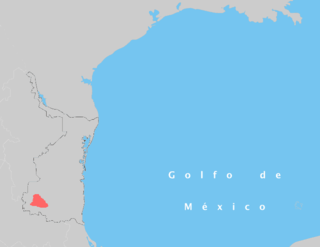
Naolan is an extinct language that was spoken a five-hour walk away from Tula, Tamaulipas in northeast Mexico. It is only known from 48 words and several phrases collected in the 1940s, and was nearly extinct at that time.
Proto-Mixe–Zoquean or Proto-Mixe–Zoque is a language that language scholars and Mesoamerican historians believe was spoken on the Isthmus of Tehuantepec during the Initial Formative Period. Wichmann (1995) has reconstructed nearly 600 Proto-Mixe–Zoquean lexical items.
Chiapas Zoque is a dialect cluster of Zoquean languages indigenous to southern Mexico. The three varieties with ISO codes, Francisco León, Copainalá, and Rayón, are named after the towns they are spoken in, though residents of Francisco León were relocated after their town was buried in the eruption of El Chichón Volcano in 1982. Francisco León and Copainalá are 83% mutually intelligible according to Ethnologue.
Chiquimulilla is an extinct Xincan language of Guatemala, from the region of Chiquimulilla.













